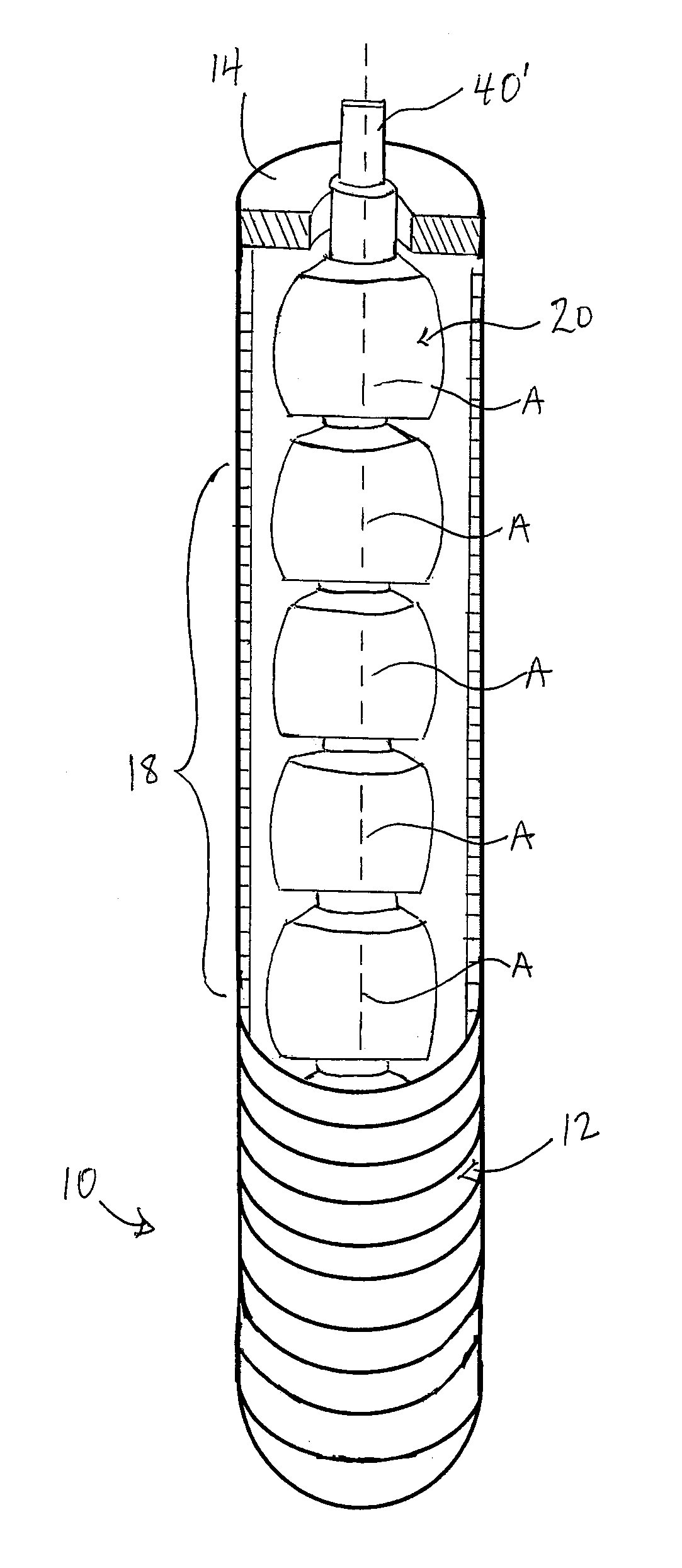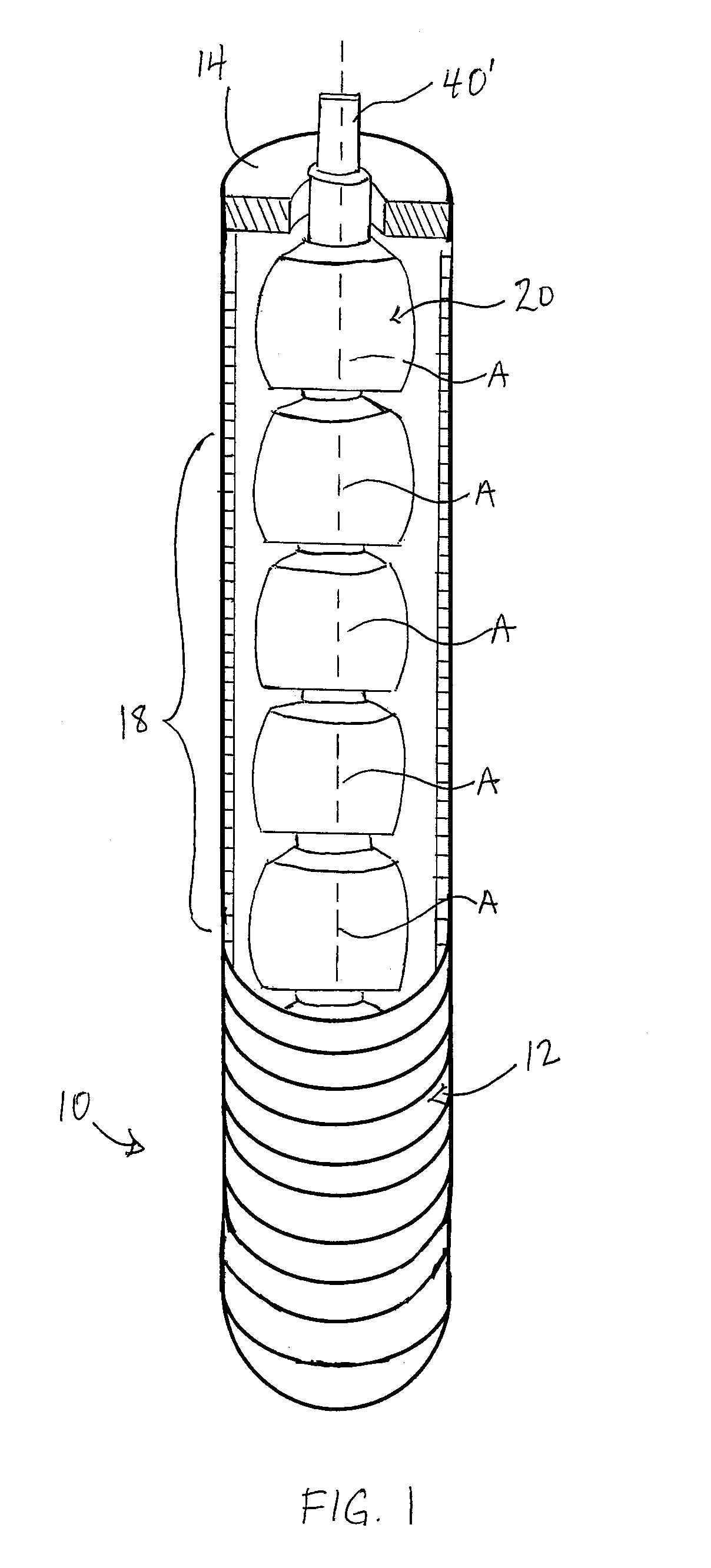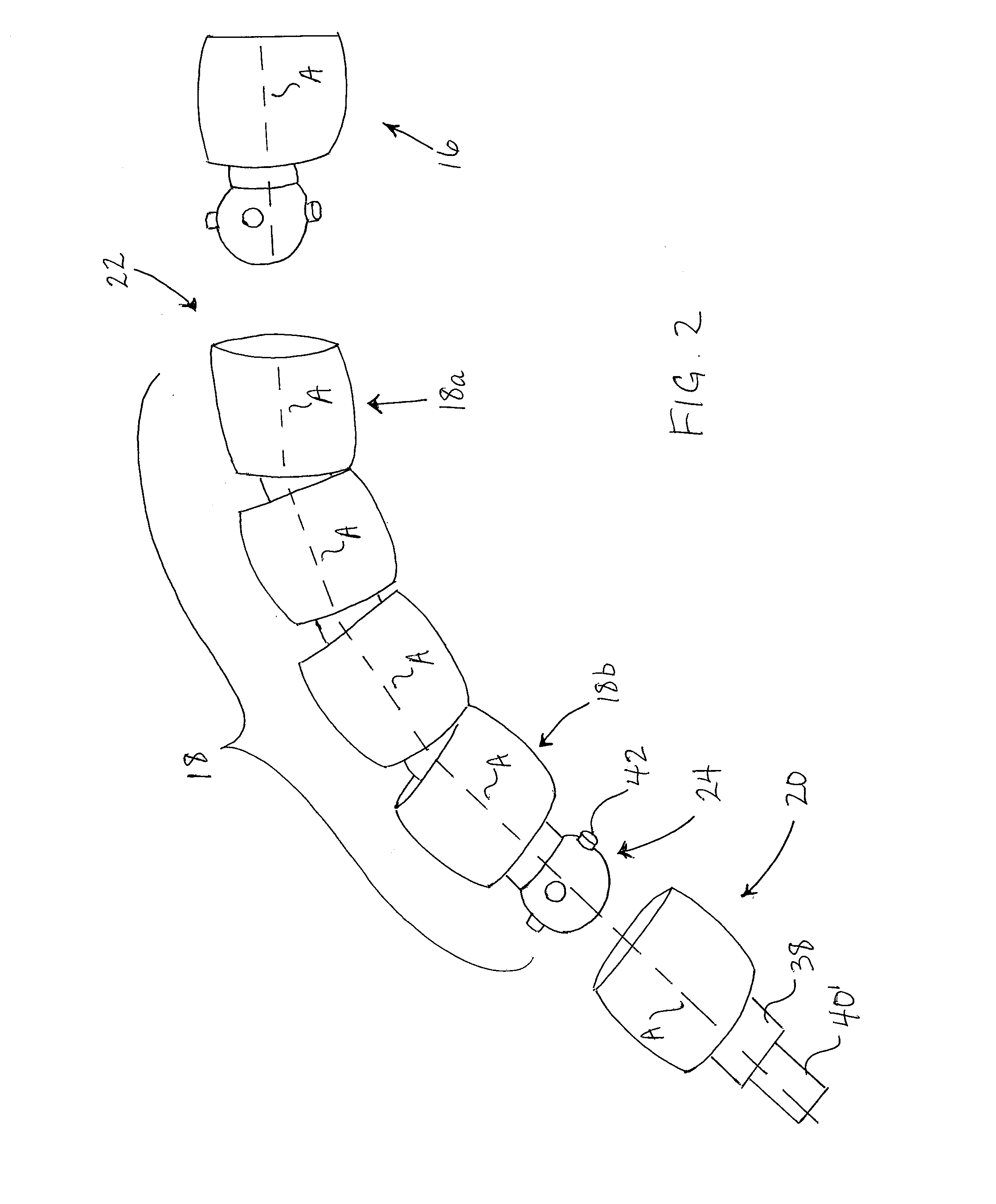Flexible Transmission Device for Tool Extensions and the Like
a transmission device and extension technology, applied in the direction of couplings, manufacturing tools, mechanical apparatus, etc., can solve the problems of reducing or voiding the torque transmission functionality between the mating couplers, limiting the attainable amount of overall flexibility between the drive and the socket, and the conventional tool design requires a notable amount of axial space. , to achieve the effect of smooth contouring
- Summary
- Abstract
- Description
- Claims
- Application Information
AI Technical Summary
Benefits of technology
Problems solved by technology
Method used
Image
Examples
first embodiment
[0117]FIG. 1 shows a flexible tool extension 10 according to the present invention which can be coupled between the female rectangular drive opening of a socket and the male rectangular drive stud of a socket wrench or impact gun in order to allow rotational drive of the socket by the wrench or impact gun without direct axial alignment therebetween.
[0118]The extension features a flexible outer jacket 12 provided in the form of a length of conventional flexible metallic conduit or tubing having an annular closure 14 (only one of which is visible in the drawings) at its two ends to define a housing in which a number of internal components are maintained. These internal components include a drive end adapter 16 (not visible in FIG. 1), a plurality of intermediate couplers 18, and a working end adapter 20, all connected together in series to run along the interior of the flexible jacket 12 with the two adapters 16, 20 respectively lying just inside the two closed ends of the jacket, and...
second embodiment
[0147]This style of pivotal connection between adjacent casing members means that the mating male-female members of the connected pair of casing members are in-plane with one another, as best shown in FIG. 12B, unlike the second embodiment where the pin-carrying lug and corresponding hole-equipped flat of the connected casing members are in adjacent, but separate, parallel planes, and are interconnected laterally (i.e. radially, relative to the bore axes of the casing links) by the pin.
third embodiment
[0148]This in-plane mating of male and female elements 162, 168 on diametrically opposing sides of the casing links to form the pivotal connection between casing members in the third embodiment is used to define a pair of stiffener-receiving passages that run along these opposing sides of the casing 112 from one end link thereof to the other. As shown in the cross-sectional views of FIGS. 12B and 12C, a closed channel 200 extends axially through each ear and slot equipped side of each intermediate link 150 so as to reach from the inner end of the recess 168 furthest from the end of the collar into which the recess extends, onward to the distal end of the ear 162 of the same link furthest from the end of the collar from which the ear projects. In a plane perpendicular to the pivot axis of the pivotal connection formed by the mating of the ear 162 in the respective recess of the next link, the channel 200 is tapered so as to grow wider from the end 202 of the channel that opens into t...
PUM
 Login to View More
Login to View More Abstract
Description
Claims
Application Information
 Login to View More
Login to View More - R&D
- Intellectual Property
- Life Sciences
- Materials
- Tech Scout
- Unparalleled Data Quality
- Higher Quality Content
- 60% Fewer Hallucinations
Browse by: Latest US Patents, China's latest patents, Technical Efficacy Thesaurus, Application Domain, Technology Topic, Popular Technical Reports.
© 2025 PatSnap. All rights reserved.Legal|Privacy policy|Modern Slavery Act Transparency Statement|Sitemap|About US| Contact US: help@patsnap.com



